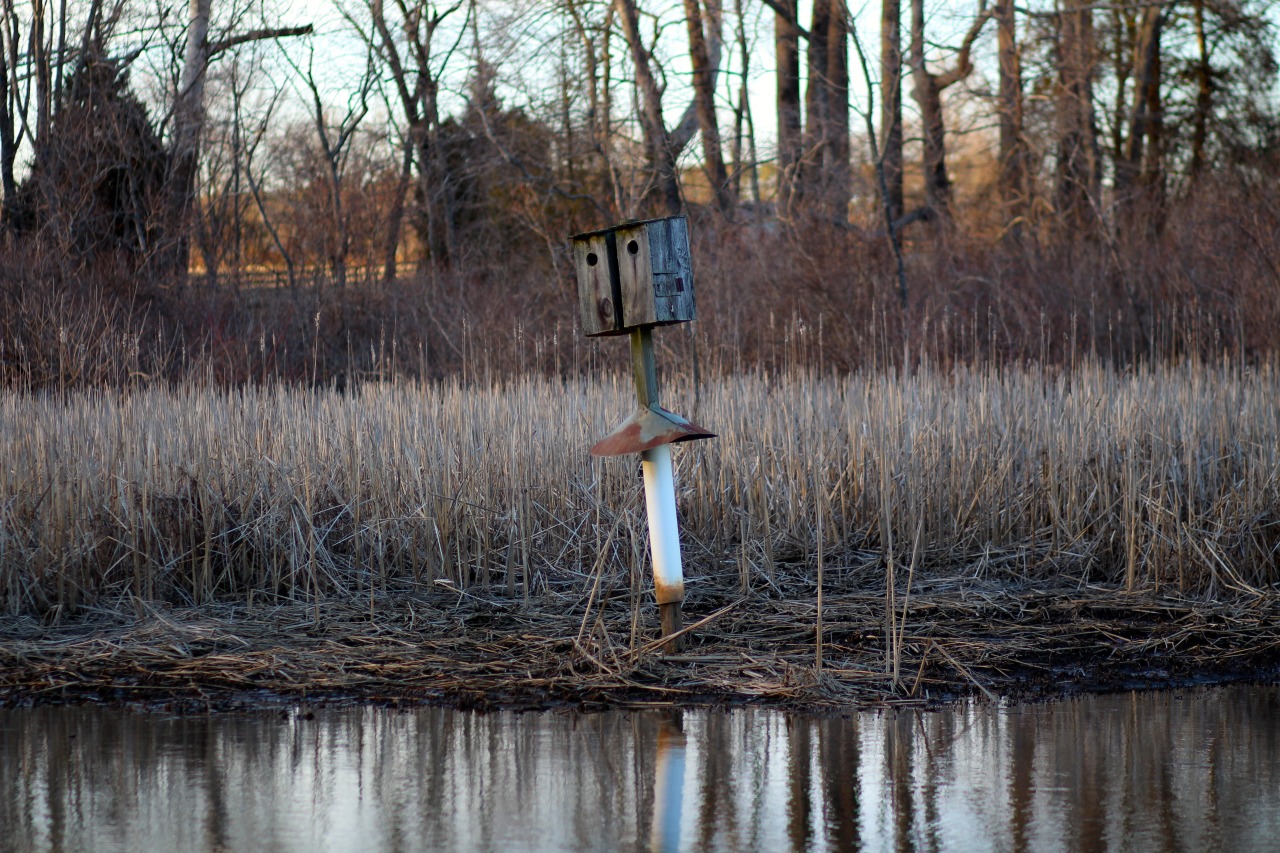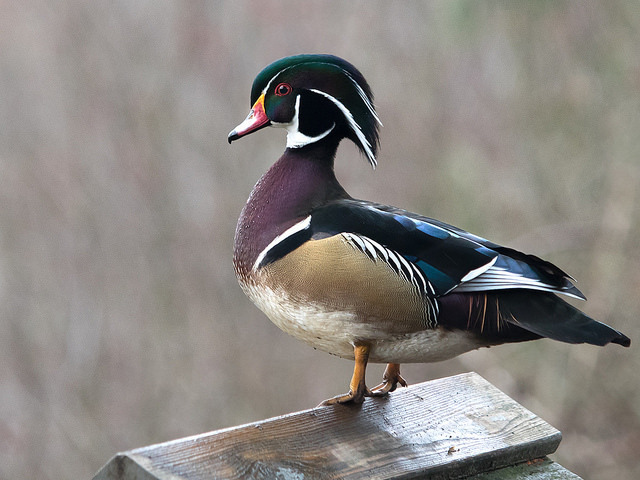Some see the return of the osprey as the herald of spring in the Chesapeake. For others, it’s the arrival of another beautiful bird- the wood duck. Wood duck boxes like the one above have been constructed in wooded marsh habitat throughout the Bay’s tributaries. Simple but sturdy, they’ll be home to these gorgeous waterfowl for a few seasons while they mate, lay eggs, and rear their young.
Wood ducks are visually arresting. Their latin name, aix sponsa, translates to “waterfowl in a wedding dress”- a clear reference to their show-stopping feathers. That distinctive plumage, however, made them a target in the 1900′s when hunters sought them as gorgeous trophies and welcome additions to the cookpot. Harvested to the brink of extinction, wood ducks were saved by hunting regulations and a popular wood duck box initiative. Homeowners participated by creating new habitat for the gaudy birds using the program’s materials and placing them in wooded marshes throughout the Bay.
The initiative has been a success story, and the wood duck’s populations are now stable. Every year as spring arrives, so too do thousands of the quick, low-flying waterfowl. They take to the wooded swamps, the tannin-rich pools reflecting their dazzling display— a reward for another winter concluded, a reminder of renewal, and a sign of the enduring beauty of the Chesapeake Bay.

